Practice Charts
1/18
There's no tags or description
Looks like no tags are added yet.
Name | Mastery | Learn | Test | Matching | Spaced |
|---|
No study sessions yet.
19 Terms
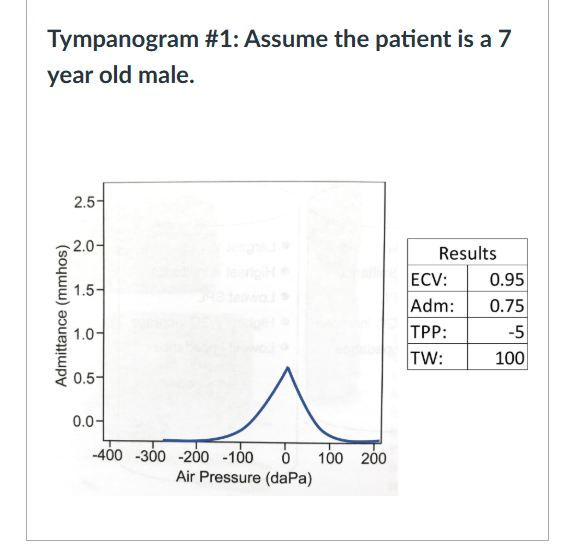
What does Tympanogram 1 suggest in terms of middle ear function?
Normal ear admittance
normal ear canal
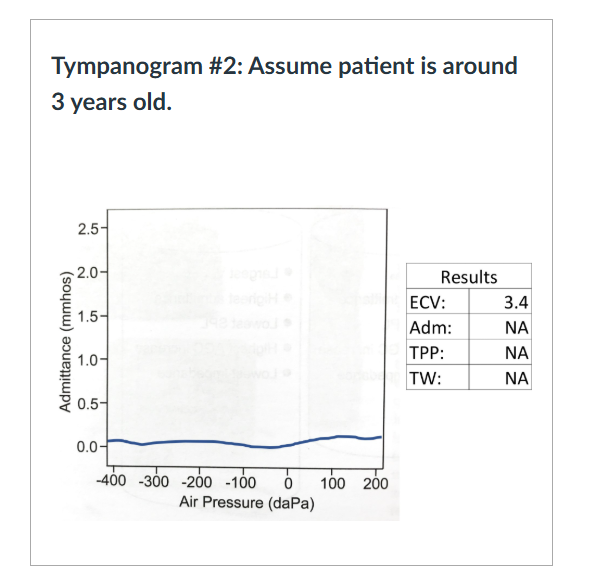
What does Tympanogram 2 suggest in terms of middle ear function?
Unclear, cannot assess admittance due to a perforation or PE tube may be present
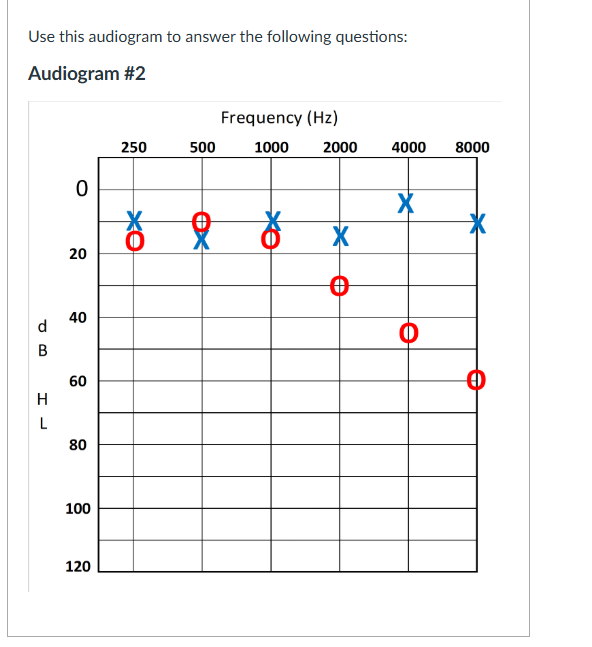
What additional testing is needed for this hearing test? Assume the patient wore insert headphones during the testing.
Masked bone conduction testing at some frequencies in the right ear
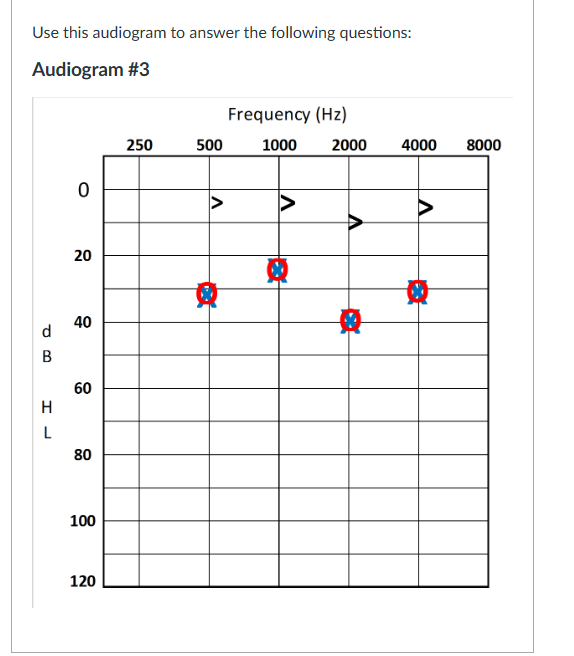
How would you describe the type and range of hearing loss for the results of Audiogram?
A mild conductive hearing loss in at least one ear
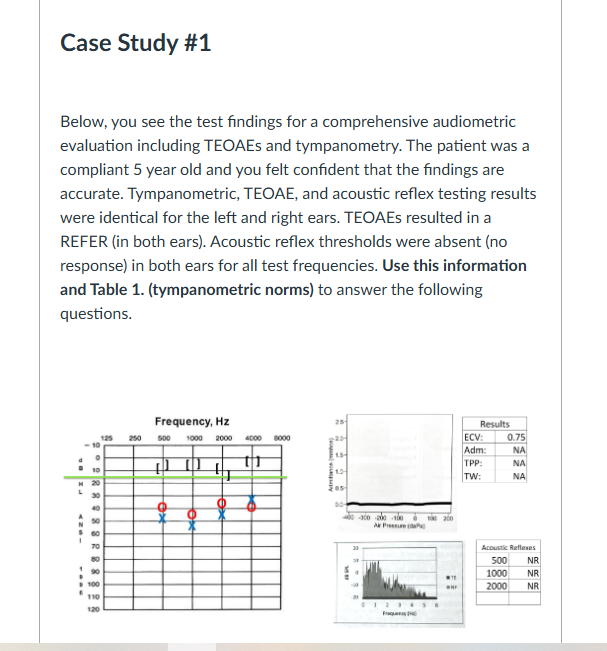
Given these test findings, which of the recommendations below would you suggest to the patient/family?
Have a repeat hearing evaluation in the near future
Be evaluated by the primary care doctor/pediatrician
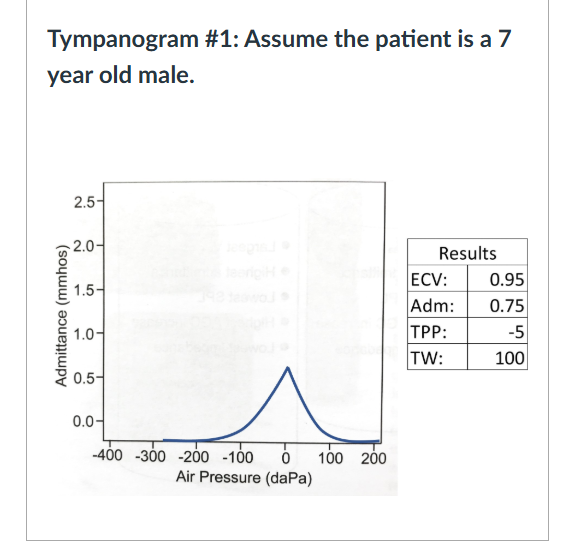
True/False: Results in Tympanogram #1 are consistent with middle ear effusion.
False
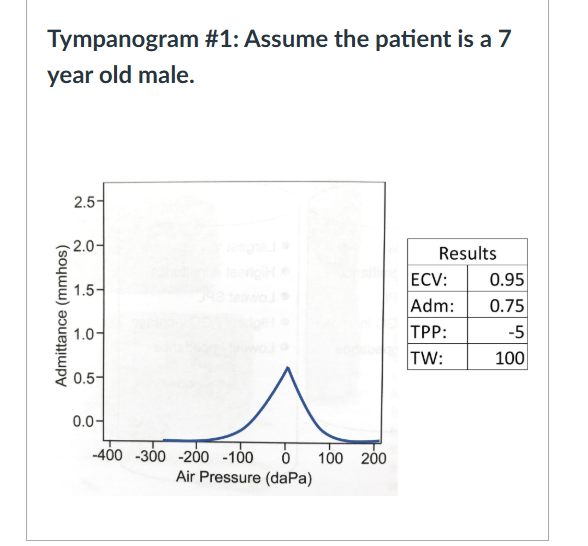
When the ear canal was depressurized to almost -300 daPa, admittance was very low. Why?
The pressure level in the ear canal pulled the eardrum toward tympanometer probe
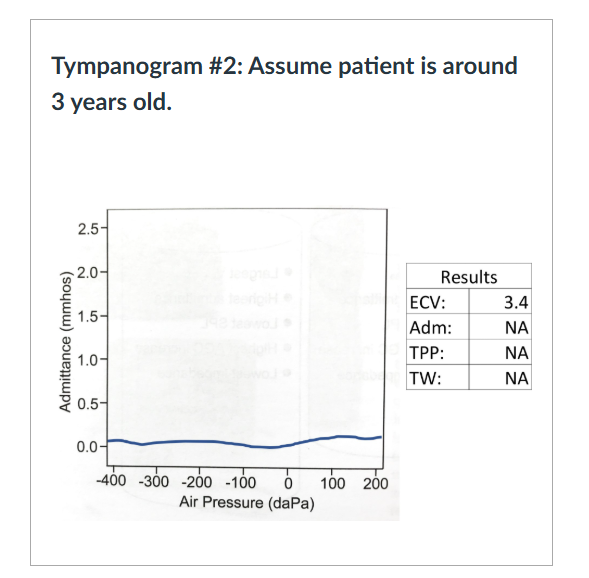
True/False: If the patient was an adult, instead of a three year old, the ear canal volume would be considered normal in size.
False

True/False: In this case, TEOAE findings provided an accurate assessment of outer hair cell function.
True
What would be the most likely reason for not passing TEOAE screening in both ears (hint: same reason for absent acoustic reflexes)?
Otitis media with effusion
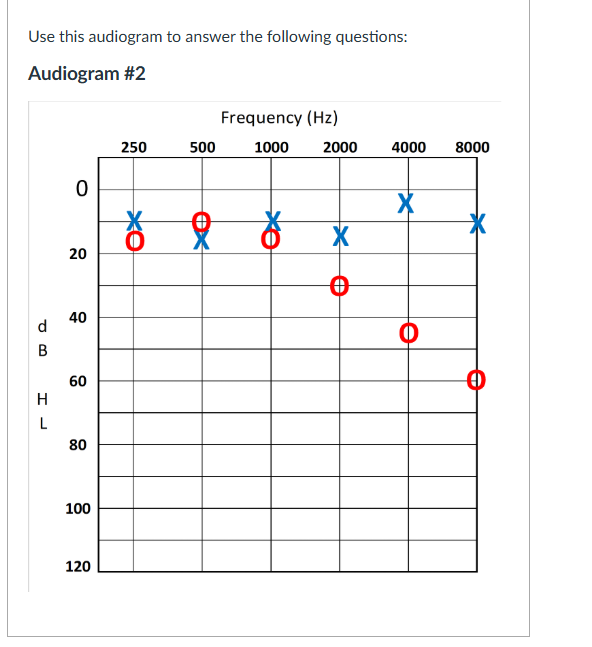
If masked air conduction testing was needed to test 4000 Hz the right ear, what would the initial masking level be according to the Plateau Method? Assume the patient wore insert headphones during the testing.
10 dB HL
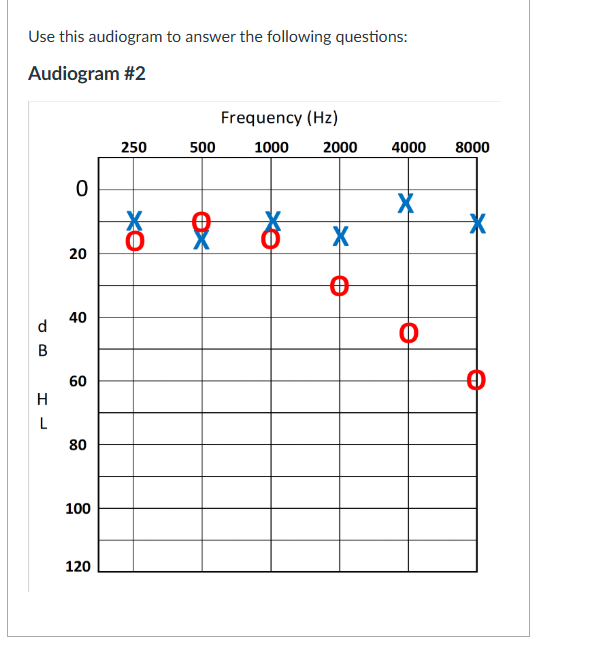
Which speech sounds may be difficult to hear when listening in the right ear?
/k/ /f/ /s/ /th/
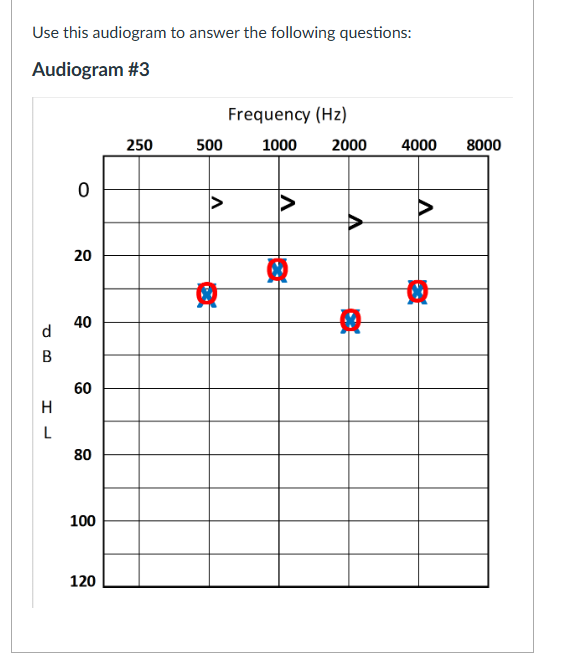
Assuming this person’s Speech Reception Threshold is 35 dB HL, what level of loudness would you use to test their Word Recognition Score?
Between 65 and 75 dB HL

True or False: Bone conduction results in this test represent best bone conduction thresholds with the bone oscillator placed on the left.
true
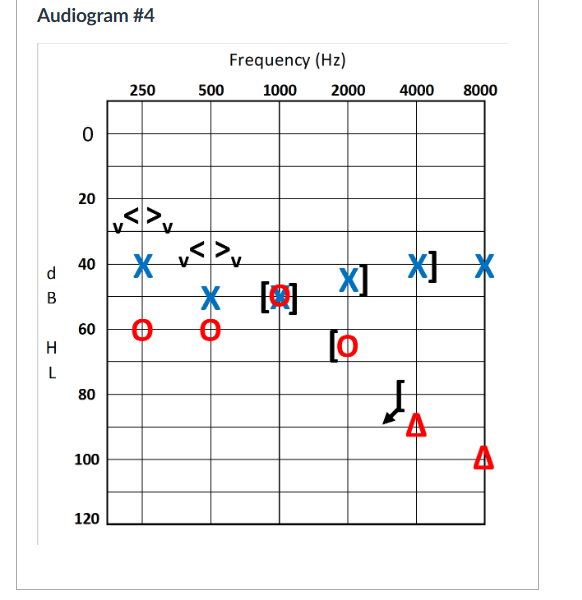
How would you describe the hearing loss in the right ear?
A moderately-severe sloping to profound sensorineural hearing loss
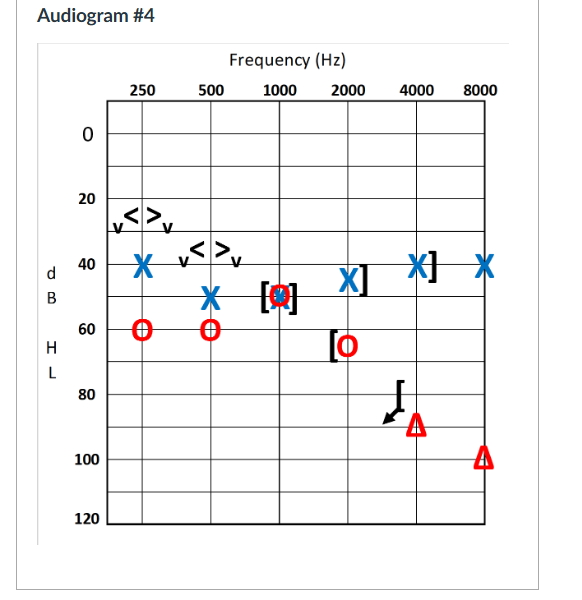
True or False: A “no response” symbol indicates that the patient could not hear the stimulus even at the amplitude limits of the testing equipment.
True
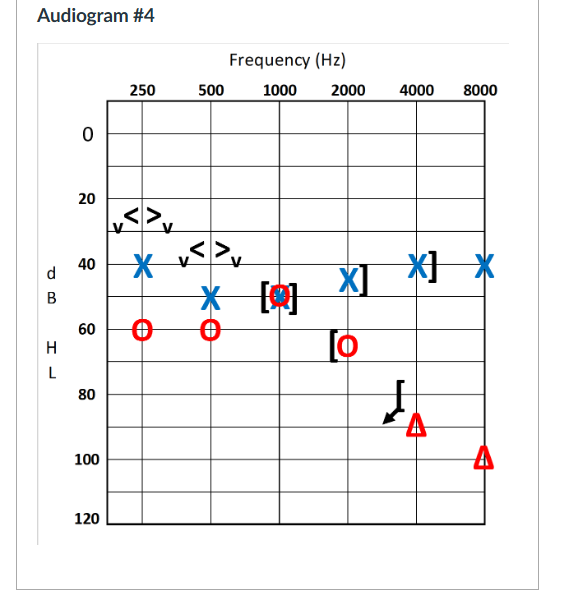
What level would you anticipate the patient’s SRT would be in the left ear?
48 dB HL
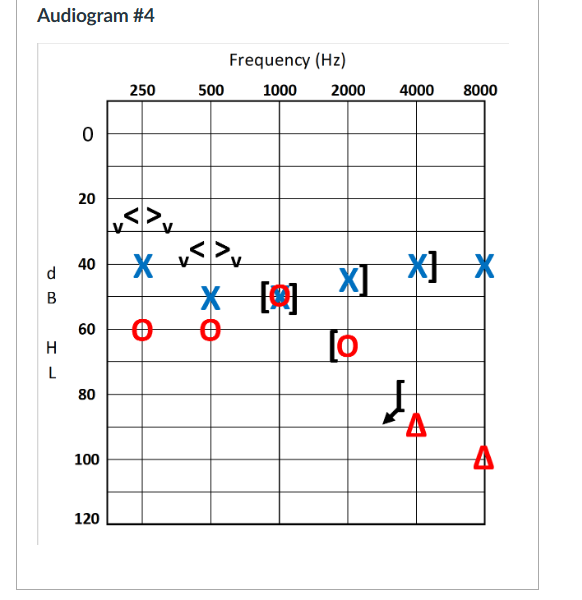
True or False: . When thinking of the hearing losses in both ears, we would say that hearing between the ears is asymmetrical.
True
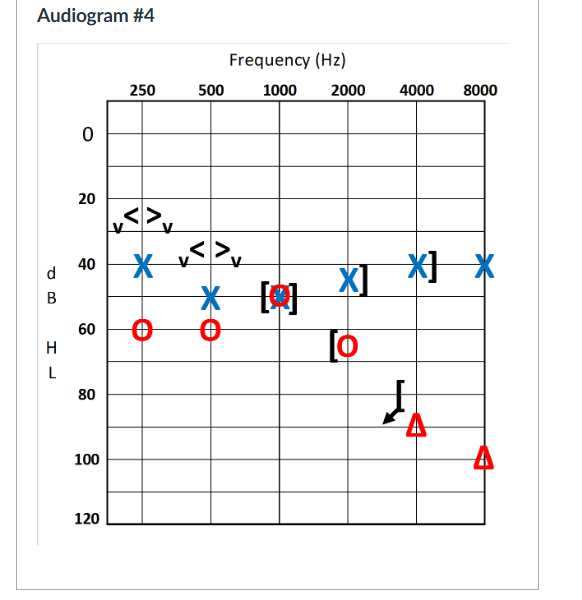
True or False: The symbol for vibrotactile response indicates that the patient definitely heard and felt the stimulus presented:
False